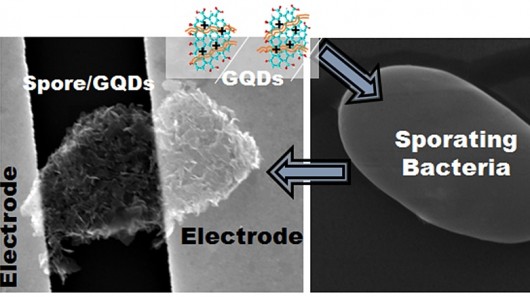
By cladding a living cell with graphene quantum dots, researchers at the University of Illinois at Chicago (UIC) claim to have created a nanoscale biomicrorobot (or cytobot) that responds electrically to changes in its environment. This work promises to lay the foundations for future generations of bio-derived nanobots, biomicrorobotic-mechanisms, and micromechanical actuation for a wide range of applications.
The UIC team has dubbed its creation NERD (short for Nano-Electro-Robotic Device). The cytobot is built on a bacterial spore – more specifically, an endospore – which is essentially a dormant version of a bacterium.
via Gizmag
Image: UIC






